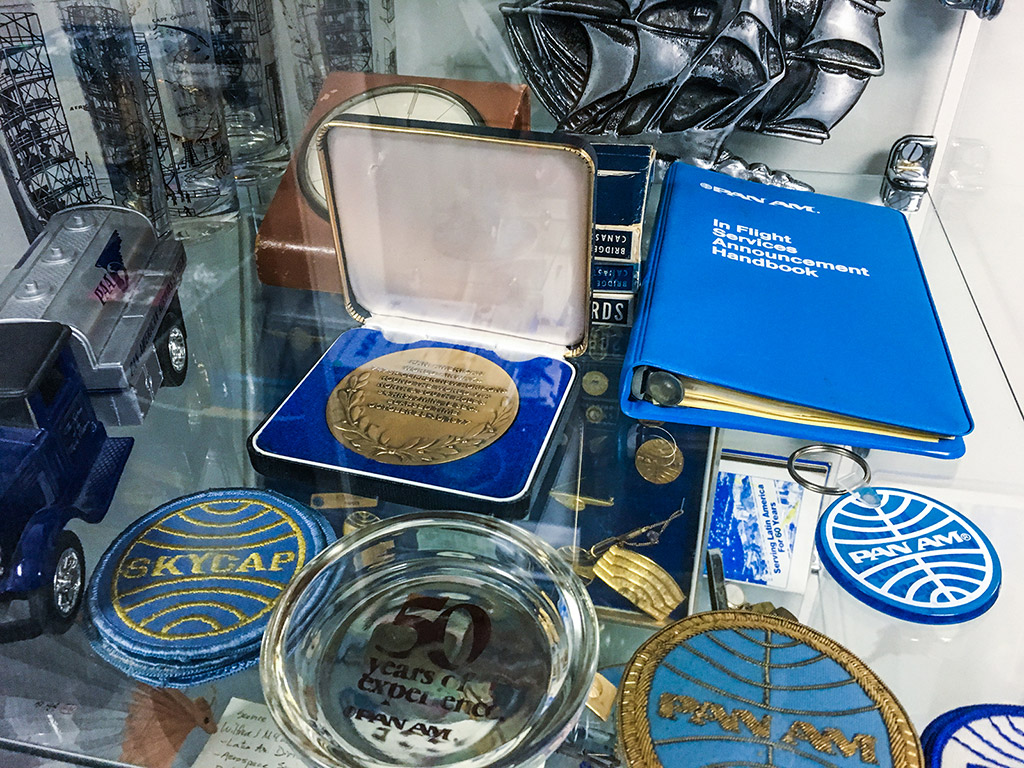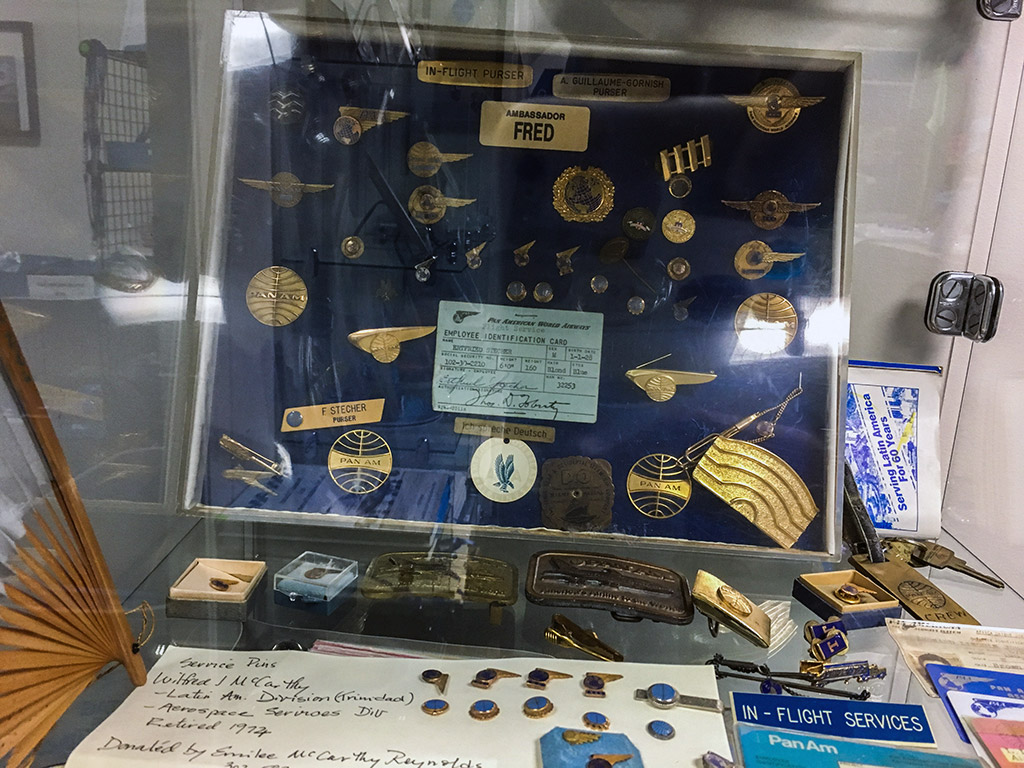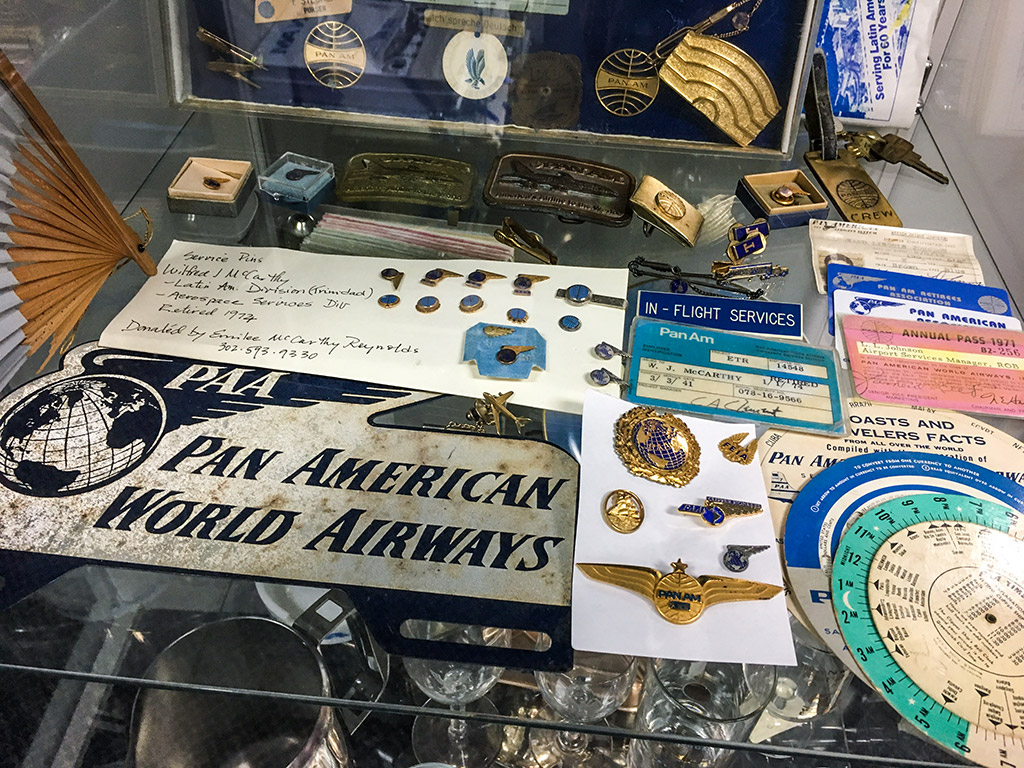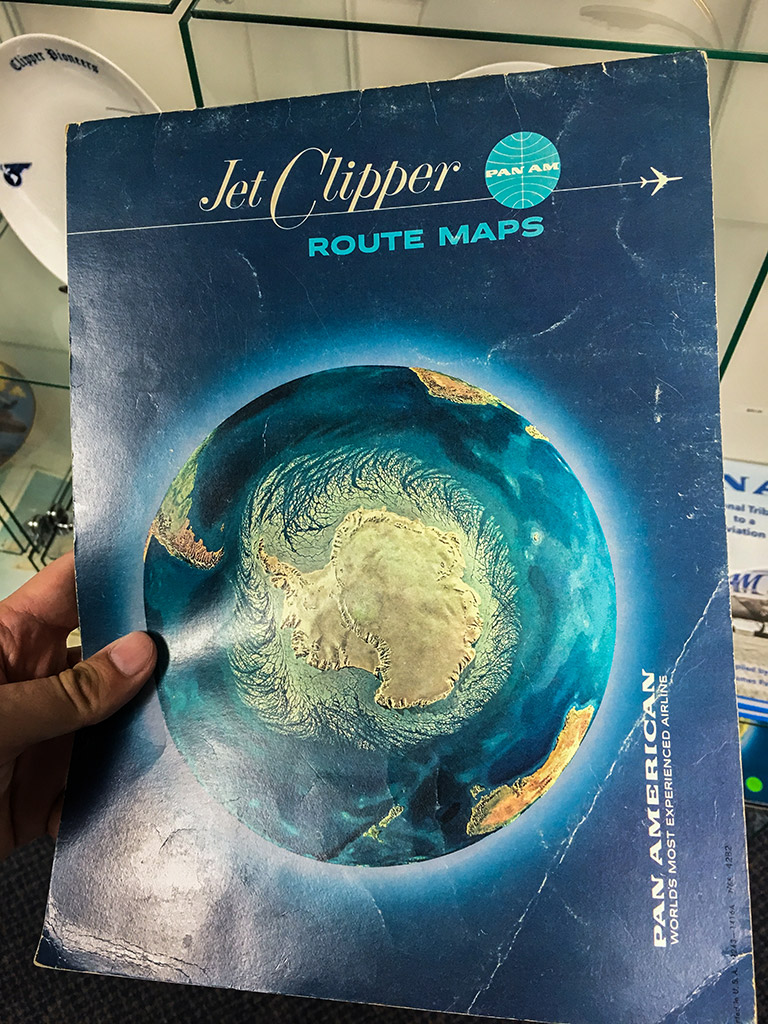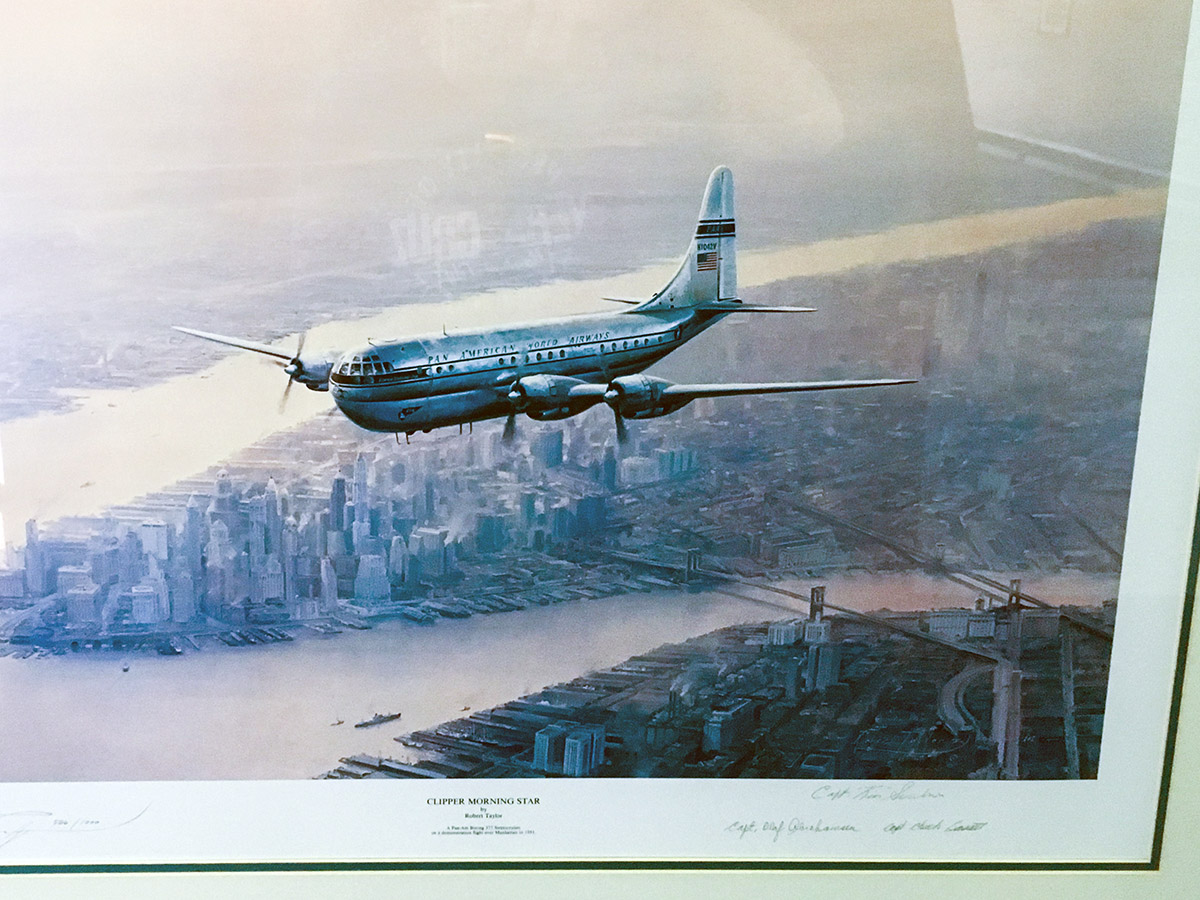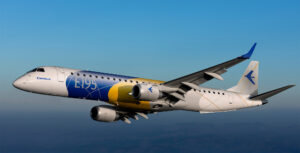Pan American World Airways, commonly known as Pan Am, holds a legendary status in the annals of aviation history. Established in 1927, Pan Am pioneered numerous innovations in commercial air travel and played a pivotal role in shaping the modern airline industry. This article provides a detailed exploration of Pan Am’s rich history, from its humble beginnings to its eventual decline.
Early Years
The genesis of Pan Am can be traced back to the vision of Juan Trippe, a young entrepreneur with a passion for aviation and a bold vision for the future of air transportation. In 1927, Trippe founded Pan American Airways Corporation, with the goal of establishing an international air service linking the Americas with distant shores.
Pan Am’s inaugural flight took place on October 19, 1927, when a Fairchild FC-2 floatplane departed from Key West, Florida, bound for Havana, Cuba. This historic flight marked the beginning of scheduled international air services and laid the foundation for Pan Am’s future expansion.

Transoceanic Travel
Undeterred by the challenges of crossing vast oceans, Juan Trippe set his sights on conquering the Atlantic. In 1931, Pan Am launched its first transatlantic service, operating flying boats between New York and Europe. These pioneering flights, made possible by the acquisition of the Sikorsky S-40 and S-42 flying boats, established Pan Am as a trailblazer in long-distance air travel.
The introduction of the Boeing 314 flying boat, known as the “Clipper,” marked a significant milestone in Pan Am’s history. With its unprecedented range and capacity, the Clipper revolutionized transoceanic travel, enabling Pan Am to establish routes linking the United States with Europe, Africa, and South America. The Clipper became synonymous with adventure and luxury, embodying the spirit of exploration and discovery.
Pan Am’s expansion required the development of extensive infrastructure, including seaplane bases, airports, and navigation facilities. The airline invested heavily in the construction of terminals and facilities to support its growing fleet of aircraft, creating a network of air routes that spanned the globe.
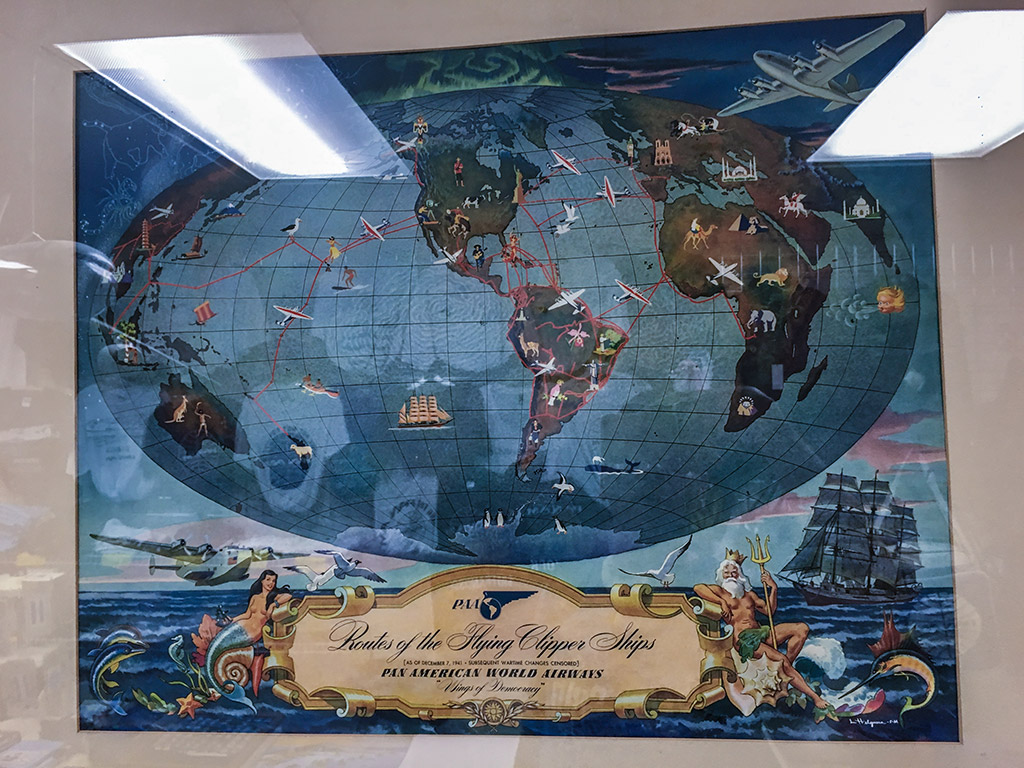
Pan Am’s pioneering achievements captured the imagination of the public and inspired a sense of wonder and excitement about the possibilities of air travel. The airline’s iconic logo, featuring the blue globe and soaring eagle, became a symbol of progress and modernity, adorning travel posters, advertisements, and promotional materials.
The early years of Pan American World Airways were defined by vision, ambition, and daring. From humble beginnings as a fledgling air carrier operating seaplanes in the Caribbean, Pan Am evolved into a global aviation powerhouse, shaping the course of commercial aviation and leaving an indelible mark on the history of flight.
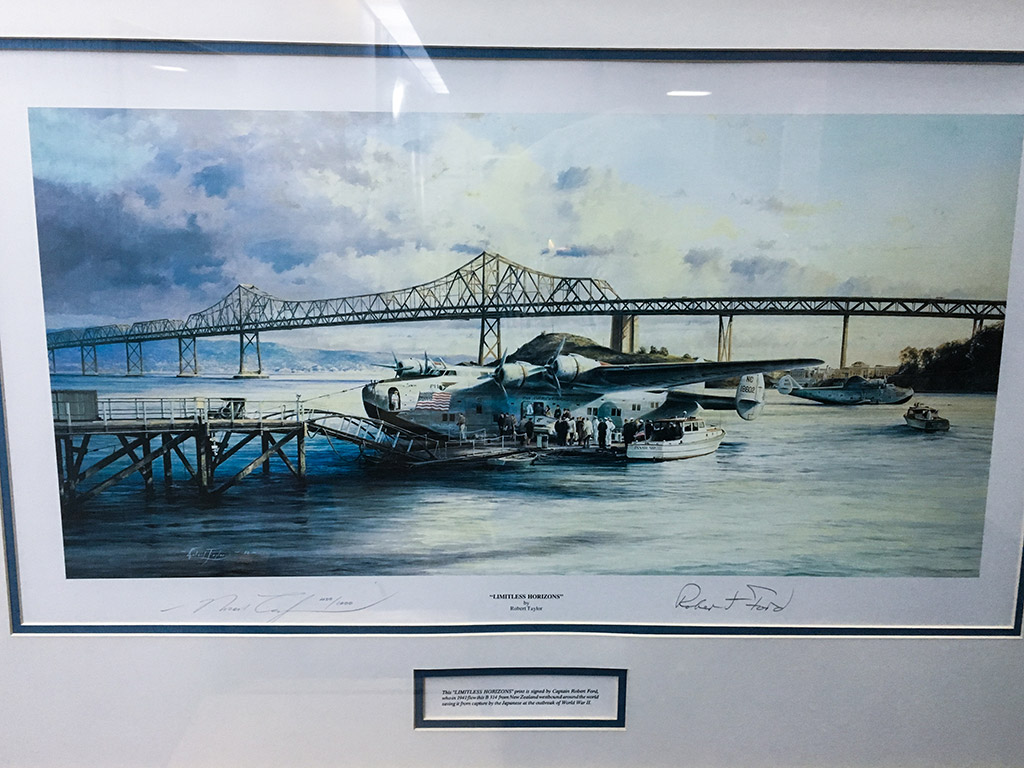
In the 1930s, Pan Am embarked on another bold endeavor to establish air routes across the Pacific Ocean. The introduction of the Boeing 314 revolutionized long-distance travel and opened up new frontiers in aviation. Pan Am’s transpacific routes, connecting the United States via Hawaii with Asia and the South Pacific, represented a triumph of engineering and logistics, cementing the airline’s reputation as a global leader in air travel.
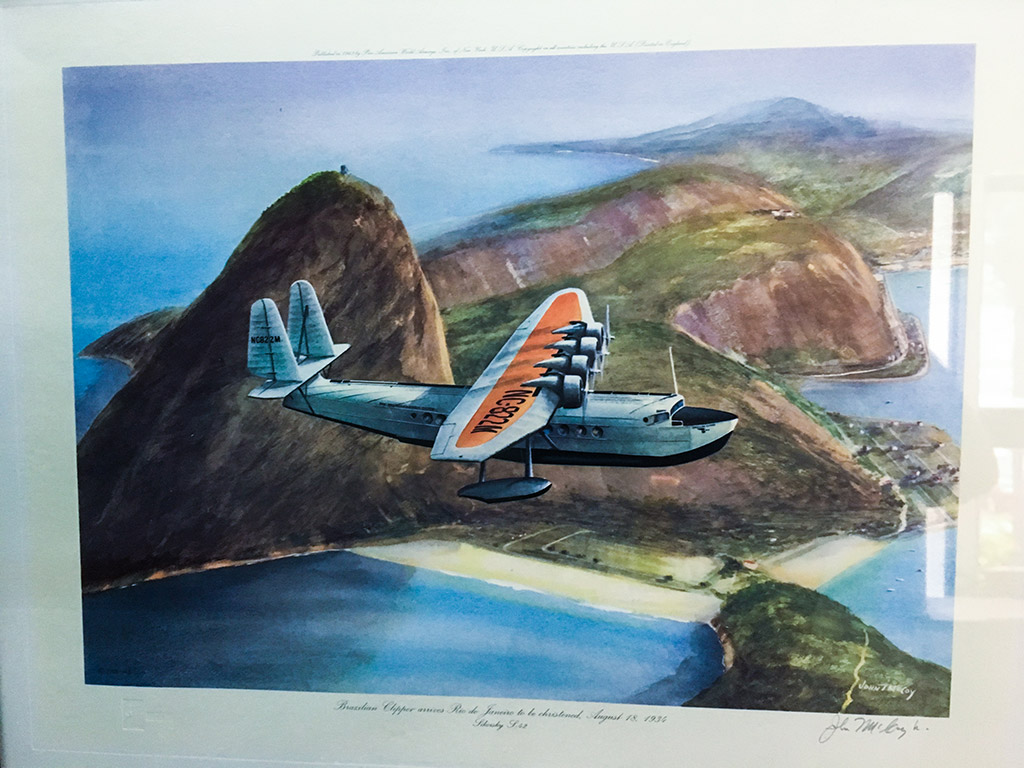
Douglas DC3
Pan Am played a significant role in the development and popularization of the Douglas DC-3, one of the most iconic and influential aircraft in aviation history. Pan Am’s involvement with the DC-3 can be traced back to the early 1930s, when the airline recognized the aircraft’s potential as a versatile and reliable transport aircraft for its expanding route network.
Pan Am was one of the first airlines to recognize the capabilities of the DC-3 and placed an order for the aircraft in 1935. The airline saw the DC-3 as an ideal replacement for its aging fleet of Ford Trimotor and Fokker aircraft, offering superior performance, comfort, and reliability.
Pan Am used the DC-3 to pioneer long-distance overwater routes across the Atlantic and Pacific Oceans. Equipped with extended range fuel tanks and navigational equipment, the DC-3 enabled Pan Am to establish regular air service to destinations such as Bermuda, the Caribbean, and South America.
Pan Am’s extensive use of the DC-3 helped solidify the aircraft’s reputation as a rugged and dependable workhorse of the skies. The success of Pan Am’s DC-3 operations influenced other airlines to adopt the aircraft for their own fleets, contributing to the widespread popularity and longevity of the DC-3 in commercial aviation.
World War II and Postwar Growth
The outbreak of World War II presented Pan American World Airways with unprecedented challenges and opportunities, as the airline played a crucial role in supporting the Allied war effort and experienced a period of remarkable growth and expansion in the postwar years.
During World War II, Pan Am’s fleet of aircraft and experienced personnel were mobilized to support military transport and reconnaissance missions across the globe. The airline operated vital air routes linking the United States with Europe, Africa, and the Pacific theater, transporting troops, supplies, and equipment to the front lines. Pan Am’s flying boats, in particular, were instrumental in establishing transoceanic air links that facilitated Allied operations and logistics.
Pan Am entered into contracts with the U.S. government to provide essential air transport services during the war. The airline operated under the auspices of the Air Transport Command (ATC), ferrying personnel and materiel to strategic locations around the world. Pan Am’s fleet of aircraft, including flying boats and land-based planes, played a critical role in sustaining Allied military operations and maintaining supply lines across vast distances. Such as a land-based version of the Boeing 314 Clipper and a military transport version of the Clipper, Douglas DC-3, Consolidated PB2Y Coronado (both, water- and land-based), Boeing 307 Stratoliner.

Particularly Pan Am’s fleet of DC-3s was providing essential transport and logistical support for the Allied war effort. Pan Am pilots flew DC-3s on a variety of missions, including troop transport, cargo hauling, and medical evacuation, demonstrating the aircraft’s versatility and reliability in wartime operations. After the war, Pan Am continued to operate the DC-3 on its domestic and international routes, serving as a workhorse of the airline’s fleet. The DC-3 played a crucial role in Pan Am’s expansion into new markets and destinations, providing reliable and cost-effective air transport for passengers and cargo
In the aftermath of World War II, Pan Am experienced a period of unprecedented growth and expansion as the world emerged from the shadows of conflict. The airline capitalized on its wartime experience and infrastructure to establish new routes and destinations, catering to a growing demand for international air travel. Pan Am’s fleet of aircraft, which included modern airliners such as the Boeing Stratocruiser and Douglas DC-4, was deployed on routes spanning the globe, connecting major cities and capitals.
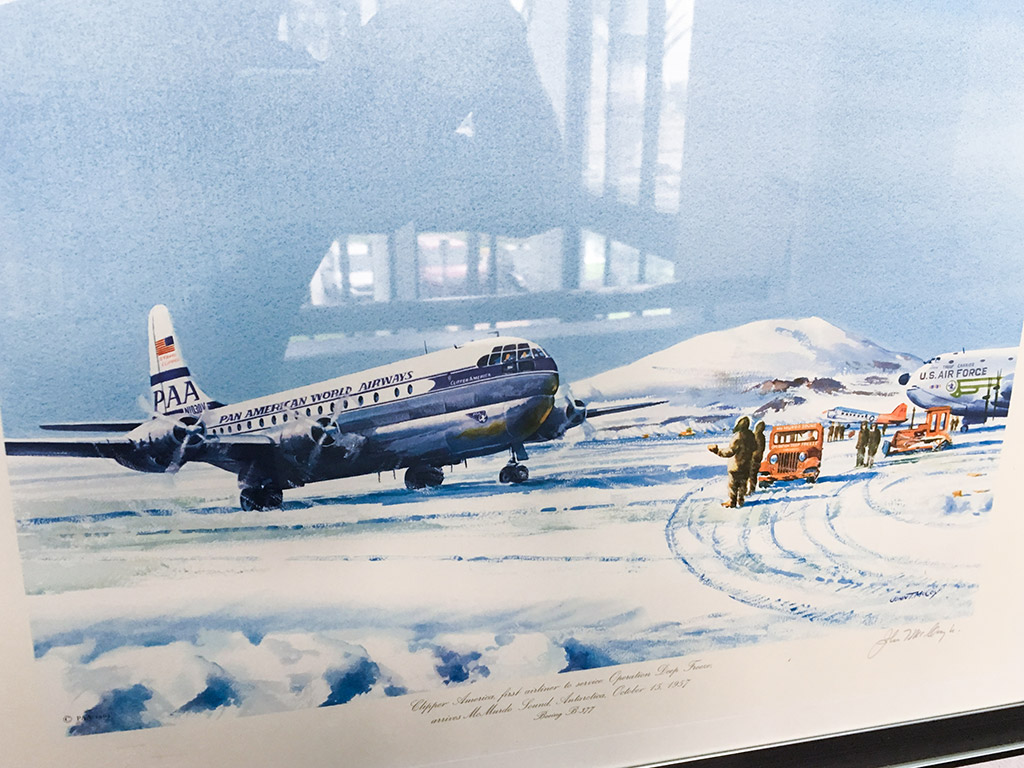
The Jet Age
The advent of jet-powered aircraft revolutionized commercial aviation in the postwar years, and Pan Am was at the forefront of this technological revolution. In 1958, Pan Am became the launch customer for the Boeing 707, the world’s first commercially successful jetliner. The introduction of jet travel dramatically reduced flight times and increased passenger capacity, ushering in a new era of air travel characterized by speed, comfort, and convenience.
Pan Am embarked on an ambitious program of route expansion and network development, establishing a comprehensive network of air routes spanning six continents. The airline pioneered new routes to exotic destinations such as Africa, Asia, and the South Pacific, opening up previously inaccessible regions to air travel. Pan Am’s iconic “round-the-world” flights became legendary, offering passengers the opportunity to circumnavigate the globe in style and luxury.
Pan Am used the Boeing 707 to inaugurate several historic routes, pioneering the era of jet-powered intercontinental travel. Some of the first destinations served by Pan Am’s Boeing 707 include:
- New York (Idlewild Airport, now John F. Kennedy International Airport) to Paris (Orly Airport): Pan Am’s inaugural Boeing 707 flight took off from New York on October 26, 1958, bound for Paris. This historic flight marked the beginning of regular transatlantic jet service, reducing travel time between the United States and Europe by several hours.
- New York to London (Heathrow Airport): Shortly after the inaugural New York-Paris flight, Pan Am expanded its Boeing 707 service to include flights between New York and London. The introduction of jet-powered service on the prestigious North Atlantic route revolutionized transatlantic travel and set new standards for speed and comfort.
- New York to San Francisco (San Francisco International Airport): In addition to its transatlantic routes, Pan Am deployed the Boeing 707 on domestic routes within the United States. The New York-San Francisco route became one of the first domestic routes served by the Boeing 707, offering travelers a taste of jet-powered luxury on transcontinental flights.
- New York to Tokyo (Haneda Airport): Pan Am’s Boeing 707 service extended beyond Europe and North America to include routes to Asia. The New York-Tokyo route, inaugurated in the early 1960s, became one of the first transpacific jet routes, linking the United States with Japan and opening up new opportunities for international travel and trade.
Pan Am’s postwar growth transformed the airline into a cultural icon and symbol of prestige and glamour. The airline’s distinctive blue-and-white livery, impeccable service, and iconic logo adorned airports around the world, evoking a sense of elegance and sophistication. Pan Am became synonymous with luxury travel, attracting celebrities, dignitaries, and jet-setters from all walks of life.
World War II and the postwar period marked a transformative chapter in Pan American World Airways’ history, as the airline emerged from the crucible of conflict to become a global aviation powerhouse. Pan Am’s wartime contributions and postwar growth solidified its reputation as a trailblazer in commercial aviation, shaping the course of air travel and leaving an indelible mark on the history of flight.
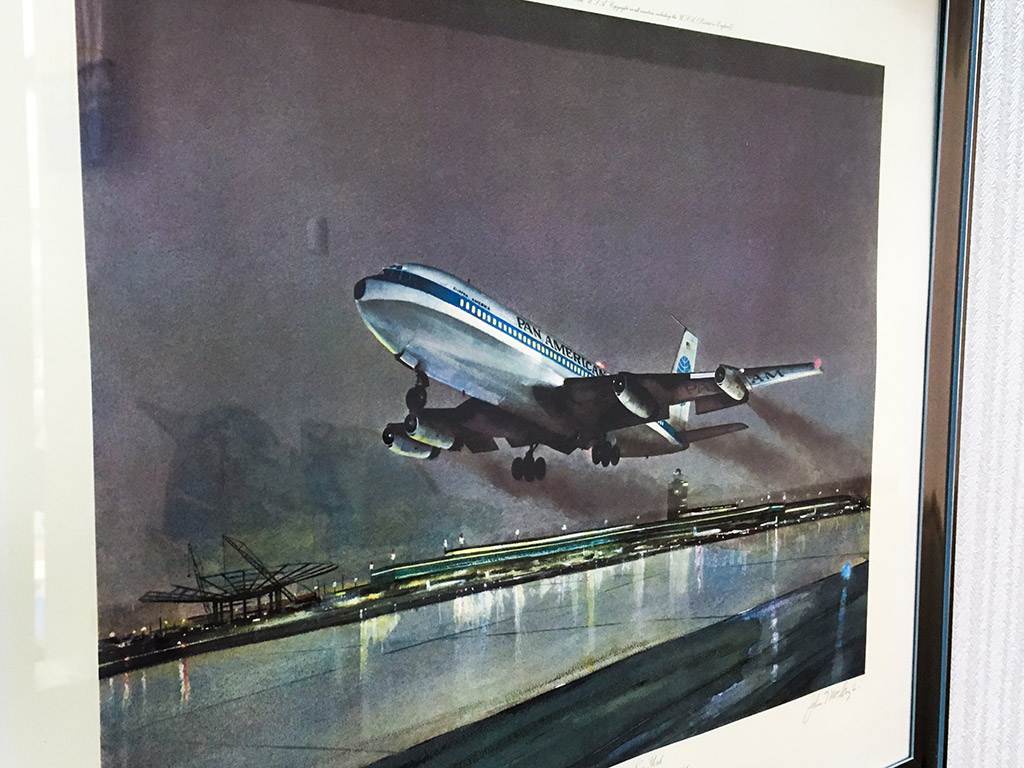
Boeing 747
Pan American World Airways (Pan Am) played a pivotal role in the development and introduction of the Boeing 747, often referred to as the “Jumbo Jet.” As one of the world’s largest and most iconic commercial aircraft, the Boeing 747 revolutionized air travel, and Pan Am was instrumental in bringing this revolutionary aircraft into service.
In the late 1960s, Pan Am’s president, Juan Trippe, envisioned a new era of air travel characterized by larger, more efficient aircraft capable of carrying greater numbers of passengers over long distances. Recognizing the potential of the Boeing 747, Trippe placed a historic order for 25 of these groundbreaking aircraft, making Pan Am the launch customer for the 747 program.
On January 22, 1970, Pan Am made aviation history when its first Boeing 747, named the “Clipper Young America,” inaugurated commercial service on the New York to London route. This inaugural flight marked a milestone in aviation, as the Boeing 747 became the world’s first wide-body jetliner to enter commercial service.
The introduction of the Boeing 747 transformed air travel, offering passengers unparalleled comfort, space, and luxury. With its distinctive humpbacked fuselage and spacious interior, the 747 redefined the passenger experience, featuring amenities such as lounges, bars, and even piano bars on select Pan Am flights. The aircraft’s massive size and impressive range also enabled Pan Am to expand its route network, offering non-stop service to destinations around the world.
Throughout the 1970s and 1980s, Pan Am operated a fleet of Boeing 747s on its flagship routes, including transatlantic and transpacific flights. The 747 became synonymous with Pan Am’s global reach and pioneering spirit, symbolizing the airline’s commitment to innovation and excellence in air travel.
Challenges and Decline
The challenges faced by Pan Am in the latter half of the 20th century ultimately led to its decline and eventual demise, marking the end of an era in commercial aviation. Several factors contributed to Pan Am’s challenges and eventual downfall:
- Deregulation and Increased Competition: The deregulation of the airline industry in the United States in the late 1970s resulted in increased competition and reduced barriers to entry for new airlines. This led to intense competition on key routes, eroding Pan Am’s market share and profitability. Newer, more nimble competitors were able to offer lower fares and more efficient operations, posing a significant challenge to Pan Am’s traditional business model.
- Geopolitical Instability: Pan Am operated a global network of routes that spanned six continents, exposing the airline to geopolitical risks and uncertainties. Political instability, terrorism, and conflicts in regions such as the Middle East and Latin America disrupted operations and undermined passenger confidence. High-profile incidents, such as the bombing of Pan Am Flight 103 over Lockerbie, Scotland, in 1988, dealt a severe blow to Pan Am’s reputation and finances.
- Financial Struggles: Pan Am faced persistent financial challenges throughout the 1980s, exacerbated by high fuel prices, mounting debt, and costly labor disputes. The airline struggled to adapt to changing market conditions and implement cost-saving measures, leading to mounting losses and declining profitability. Despite efforts to restructure and streamline operations, Pan Am continued to hemorrhage money, further weakening its financial position.
- Fleet Modernization Challenges: Pan Am’s aging fleet of aircraft became increasingly obsolete in the face of technological advancements and changing passenger preferences. The airline’s failure to invest in modern, fuel-efficient aircraft put it at a competitive disadvantage compared to newer carriers with more modern fleets. Pan Am’s inability to modernize its fleet and adapt to changing market trends further contributed to its decline.
- Leadership and Management Issues: Pan Am underwent a series of leadership changes and management upheavals in its final years, further exacerbating its challenges. Poor strategic decisions, including ill-fated acquisitions (purchase of National Airlines and Braniff International Airways’ Pacific Division) and failed expansion efforts, weakened Pan Am’s competitive position and eroded shareholder confidence. Internal strife and labor disputes also undermined morale and productivity, hindering efforts to turn the airline around.
In December 1991, Pan American World Airways filed for bankruptcy and ceased operations, marking the end of an era in commercial aviation. The demise of Pan Am sent shockwaves through the industry and underscored the challenges faced by legacy carriers in a rapidly evolving and increasingly competitive market. Despite its iconic status and pioneering achievements, Pan Am ultimately succumbed to a combination of external pressures and internal shortcomings, leaving behind a legacy of innovation, glamour, and nostalgia.
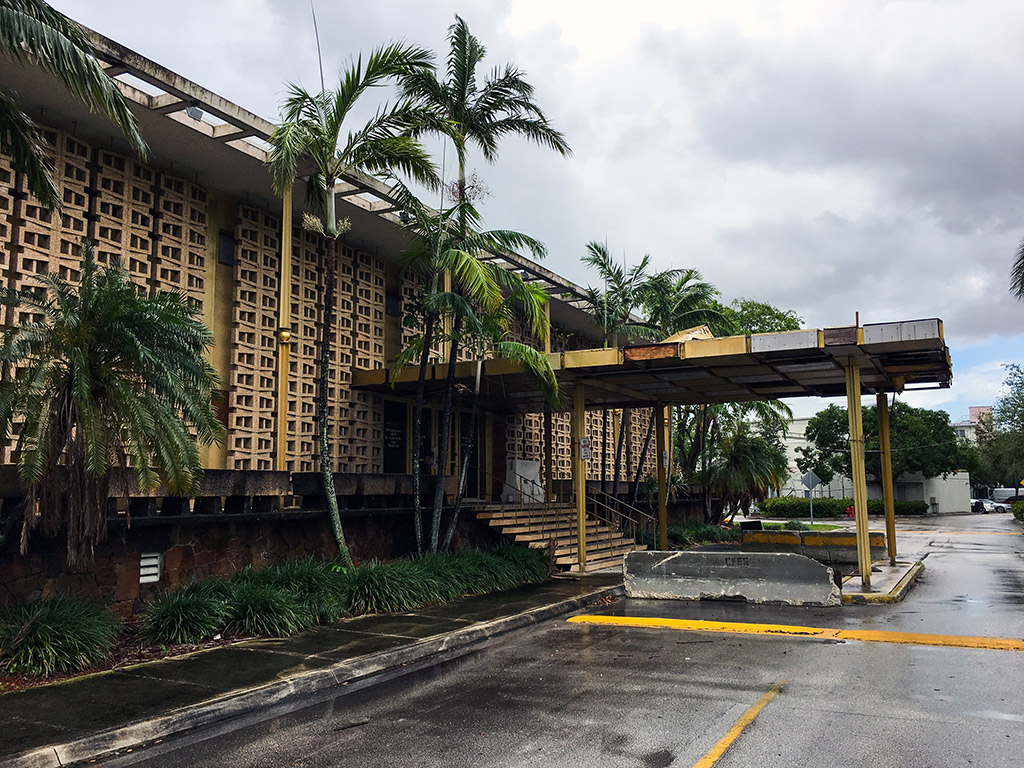
Although Pan Am is no longer in operation, its legacy lives on in the collective memory of aviation enthusiasts and travelers worldwide. The airline’s pioneering spirit, commitment to excellence, and vision for the future continue to inspire future generations of aviators and industry leaders. Pan Am remains a symbol of innovation, exploration, and the boundless possibilities of flight.
Today, Pan Am’s legacy is being preserved by a small number of non-profit museums and the Pan Am Historical Foundation. They’re having an online shop at https://the-clipper-boutique.myshopify.com/ selling annual memberships, calendars and DVDs. You can also make a donation at https://www.panam.org/join-support
There’s the official Pan Am Museum in Garden City, Long Island, New York (within the Cradle of Aviation Museum). Please make sure to stop by when you’re in the area or head to their website for a small donation.
Both organizations are being supported by Ed Trippe, son of Pan Am’s President and CEO Juan Trippe.
